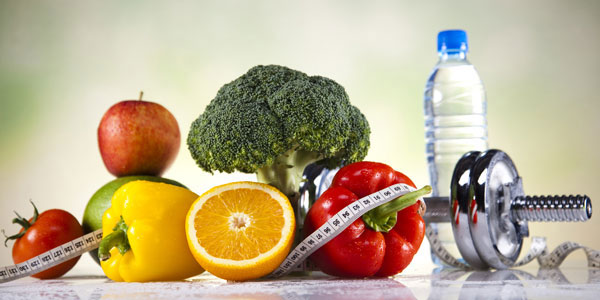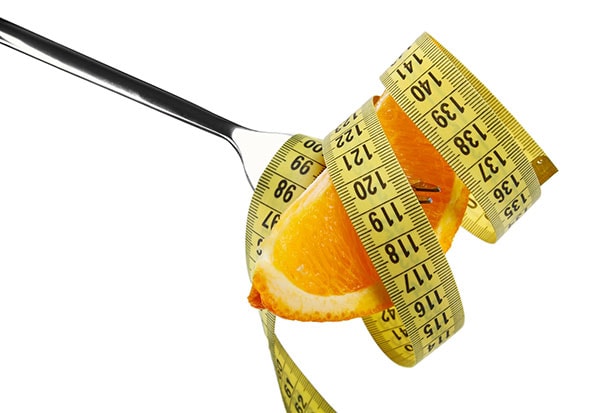 One of the most effective treatments for obstructive sleep apnea is weight loss. However, as the medical community struggles with dynamic changes and as physicians become busier and busier, less time is spent counseling sleep patients about weight loss. If the sleep dentist truly wishes to help his sleep patients improve, the sleep dentist should know the basics of weight loss and be able to counsel patients when appropriate. Staying with the science can help with what can be an uncomfortable subject.
One of the most effective treatments for obstructive sleep apnea is weight loss. However, as the medical community struggles with dynamic changes and as physicians become busier and busier, less time is spent counseling sleep patients about weight loss. If the sleep dentist truly wishes to help his sleep patients improve, the sleep dentist should know the basics of weight loss and be able to counsel patients when appropriate. Staying with the science can help with what can be an uncomfortable subject.
Understanding weight loss requires knowledge of the physiology of weight gain and weight loss, and subsequent behaviors that can lead to physiological change in the body. People eat foods that consist of carbohydrates, protein, fats, and/or fiber. Each of these has a different effect on the body.
Carbohydrates
Not so long ago, excess fat consumption was thought to be the leading cause of weight gain. Today, we know that carbohydrates are the culprit.1 Even though carbohydrates are the main source of energy for the body, it is known that not all carbohydrates are created equal. Simple carbohydrates, also known as refined carbohydrates, found in such foods as table sugar, white flour bread, cakes, fruit, candy, potato chips, breakfast cereals, and the like, are made up of only one or two glucose molecules. These simple molecules are rapidly absorbed by the digestive tract and cause a spike in blood sugars. These foods have little nutritional value, and if eaten in excess the body sends these carbs to the liver to be stored as fat throughout the body.2
On the other hand, complex carbohydrates, made up of three or more glucose molecules linked as a chain, and found in such foods as vegetables, legumes, and whole grains, take longer to digest. Usually, these foods contain vitamins and nutrients that are beneficial to the body.
For every 10 calories of carbohydrates eaten, the body burns 1 calorie to convert the carbohydrate to sugar.3 Typically, about 70% of the sugars are rapidly absorbed into the bloodstream and burned off as energy in about 6 hours. The remaining 30% is converted to triglycerides and stored in fat cells. Carbohydrates raise the blood sugar which triggers insulin release from the pancreas. Insulin clears the glucose (sugar) from your bloodstream. As the blood sugar drops, craving for more carbohydrates increases. If more carbs are eaten, insulin production spikes and then falls and these cycles can become persistent. In many cases, over time, excess production of insulin leads to the body becoming immune to the effects of insulin and type 2 diabetes occurs. Fortunately, not all carbohydrates digest at the same rate. Some raise blood sugar levels faster than others. The ability to raise blood sugar is defined by the glycemic index.4 The higher the index number, the more elevated the blood sugar level becomes when eaten. Generally, carbohydrates with a number higher than 70, cause an extremely fast rise in blood sugar resulting in spikes of insulin that encourages fat storing. Carbohydrates with a glycemic index below 55 cause a lower rise in blood sugar and insulin, and hence, make you feel not hungry longer. Carbohydrates between 55 and 69 cause a moderate rise in blood sugars and insulin. There are reference books that list the glycemic index for most foods. Obviously, it is beneficial to eat carbohydrates that have a lower glycemic index.
Fats
Fat, once thought to be the bane of diets, are now understood to have beneficial and needed requirements for a healthy diet.5 Of course some fats are better than others. Monounsaturated and polyunsaturated fats are considered healthy. Monounsaturated fats improve cholesterol levels, enhance insulin sensitivity, and help stabilize blood sugar levels. Foods such as olive oil avocados, almonds, and other nuts contain monosaturated fats. Polyunsaturated fats contain omega-3 and omega-6 fatty acids and help reduce inflammation. Soybean oil and fatty fish such as salmon contain polyunsaturated fats. Saturated fats are found in meats, cheese and butter, and in some plant oils such as coconut and palm oil. These fats are beneficial in small amounts. Trans fat, on the other hand, is the worst fat for you. These fats are man made by hydrogenation of unsaturated fats. These fats are made to increase shelf life of certain foods such as baked goods. Trans fat has been implicated in rising LDL (bad cholesterol) levels and decreasing HDL (good cholesterol).
All fats are high in calories. Whereas, carbohydrates contain 4 calories per gram, fat has 9 calories per gram; and it only takes 1 calorie to digest 100 calories of fat. Fats are energy storehouses.
Protein
Protein provides the building blocks for the body. Protein is needed for the body to grow, repair, and maintain itself. Protein is usually ingested as meat, but can be obtained from dairy products and some plant sources. Protein contains 4 calories per gram, but it takes one calorie to burn four calories of protein. It takes longer to digest protein than it does carbohydrates or fats. Because of this and because protein reduces the levels of the hunger hormone Ghrelin and triggers the release of the digestive hormone CCK, which reduces hunger, proteins discourage overeating.6 Protein helps maintain lean muscle mass to boost metabolism and the amino acids from protein are essential for cellular health and building.
Fiber
There are two kinds of fiber. Insoluble fiber consists of items the body cannot digest. It does not absorb water. Insoluble fiber type helps speed food through the digestive tract and reduces the risk of constipation and hemorrhoids. The second type of fiber is soluble fiber. A by-product of complex carbohydrates, soluble fiber attracts water and becomes a gel like substance that swells. This slows digestion to increase satiety. It also helps modulate blood glucose levels and lowers cholesterol. Inulin, a type of soluble fiber, promotes the growth of gut bacteria that improves bowel function and improves absorption of vitamins and nutrients. It also decreases the body’s ability to manufacture certain kinds of fat.7
E & M
Most overweight people are judged by their body mass index.8 While this can be appropriate, some are labeled as overweight even though they may be a specimen of perfect health. Muscle weighs more than fat. Hence, a muscular person could be marked as overweight even though they are healthier than most. Perhaps a better method is to calculate the waist to height ratio. The waist circumference measurement should be less than half of a person’s height. The waist measurement should be taken about an inch above the belly button.9 If the measurement is greater than one half of the height, the individual is at a greater risk for type 2 diabetes, high blood pressure, heart disease, and sleep apnea.
If food metabolism is understood, it becomes easy for the dentist to counsel patients about weight loss. Many nutritionists maintain that weight loss is 90% diet and 10% exercise. To burn the calories provided by eating a cupcake, it would require heavy exercise for over an hour. Nonetheless, exercise is important for a variety of reasons because among other things it can increase energy and stamina, create better moods, reduced stress, enhance memory, lower blood pressure, and improve sleep. A moderately active person should attempt to achieve 6000 steps per day, with a goal of 10,000 steps per day as measured by a pedometer.10 Pedometers may be purchased at sporting good stores or as a phone app. Instead of attempting to exercise to a lean body, the main goal of weight loss should be to limit caloric intake. To maintain body weight, caloric intake should be about 14-16 calories per pound of body weight for men, and 12-14 per pound of body weight for women. To lose weight, caloric intake should be less.11 To find the ideal calories for an individual, caloric calculators found on the web can be useful.
The best way to lose weight is to eat the right foods. Generally, most people eat too many carbohydrates. Limiting their intake goes a long way towards healthier living. Avoiding carbohydrates that have a high glycemic index is encouraged. Carbohydrates should comprise about 45% of one’s total calories. Protein should total 30-35% and fat 25-30% of the diet. One of the bigger secrets to weight loss is to eat 5-6 meals per day. The three “main meals” should be eaten at “normal times”. About 2.5 hours after a meal, a snack should be consumed. Since proteins tend to mute hunger, the snack should contain protein. Many feel that at least 15-20 grams of protein should be eaten at the snack. This helps avoid gorging at the main meal. Simple carbohydrates as snacks should be avoided. An example of an good snack would be a piece of turkey wrapped in cheese. Main meals should include complex carbohydrates, protein, and some fat. Purchasing a book or using the web, the caloric value of the foods can be determined. The goal would be to consume fewer calories than required for weight maintenance. With practice an individual can be proficient at estimating their caloric intake. Another secret of weight loss is to drink plenty of water. Many times dehydration is interpreted by the body as hunger. Drinking 50-60 oz. of water per day eliminates this. Avoiding sodas, even diet sodas, and alcohol is wise. Simple sugar is a major ingredient of sodas. Artificial sweeteners in diet soda have been implicated with interfering with digestion and have not been shown to reduce weight. Alcoholic drinks amount to empty calories. “Many a dietician will tell you “For every drink you have, you have to subtract something else from your diet, or add another mile on the treadmill.” Another secret for weight loss is the lack of vitamin D. Where appropriate, Vitamin D supplements may help with weight loss.12 Others advocate avoiding foods made from wheat. Wheat is usually refined and used in baked goods. These simple carbohydrates are often unnecessary calories with little nutritional value. Losing weight and maintaining weight loss is simple with a little knowledge and common sense.
 In the dental sleep office, weight counseling can be beneficial. If the dentist is pushed for time, an auxiliary can be trained to assist patients. Remember, “People with severe sleep apnea who lost the recommended amount of weight were three times more likely to experience a complete remission of sleep apnea symptoms compared to people who didn’t lose weight.”13
In the dental sleep office, weight counseling can be beneficial. If the dentist is pushed for time, an auxiliary can be trained to assist patients. Remember, “People with severe sleep apnea who lost the recommended amount of weight were three times more likely to experience a complete remission of sleep apnea symptoms compared to people who didn’t lose weight.”13
Stay Relevant With Dental Sleep Practice
Join our email list for CE courses and webinars, articles and more..




